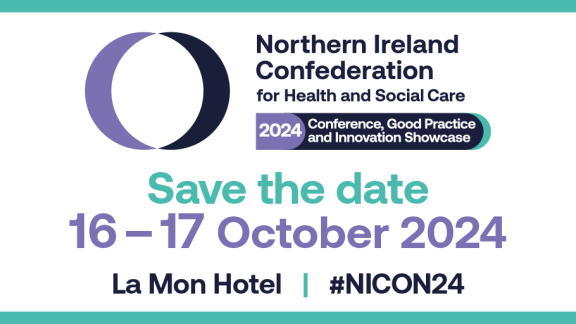Key points
This paper sets out our vision for at-scale general practice in the context of the three core principles of the Fuller stocktake: personalised care for those who need it most delivered through integrated neighbourhood teams, a joined-up approach to prevention and streamlined access.
Shaped by our members, our vision provides an ambition which we believe primary care should be striving for with the right support. As part of the NHS Confederation, our work to support, connect and represent our primary care members will be driven by our vision and the key principles that underpin that vision.
Our members are at-scale providers of primary care services; they work to support and stabilise the partnership model and, where appropriate, develop new models of delivery based on local need.
At-scale primary care is a critical system partner with the potential to deliver significant progress towards the ambitions of integrated care systems, and it must be empowered to lead and innovate to meet that potential.
A sustainable future for primary care must involve patients as partners in their own care, by providing them with the support, knowledge and technology to manage their health conditions and system pathways.
To deliver the right care in the right place, primary care must have the flexibility and support to develop models of delivery which suit the needs of their population. Embracing new models and economies of scale shaped by primary care providers has the potential to build on the success of existing at-scale providers who have demonstrated that they can provide more efficient and effective care as part of an integrated system.
Equity of access must be a priority for the future of primary care, with the outcomes for both longitudinal and episodic care recognised as more important than the number of appointments delivered.
Primary care networks (PCNs) will continue to be a key driver of integration and hold a vital role in delivering integrated neighbourhood working as part of emerging ‘teams of teams’, which bring together local care providers and wider system partners to address the wider determinants of health, adopting a holistic approach to improving the health and wellbeing of communities, and reducing health inequalities.
Effective population health management improvement will require a firm commitment to primary care at scale, through PCNs, GP federations and primary care collaboratives which can leverage their scale and combined resources to deliver for a whole population.

Our vision
Our vision is for an empowered, connected and respected primary care system that is robust, resilient and has a thriving future. A primary care system that operates at all layers of scale, starting closest to the community and working upwards, collaborating with relevant partners to deliver the right care at the right time with the right team.
A system where there is recognition and investment in delivery models and partnerships to cultivate collective responsibility and agency for local improvements; where there is diversity of expertise and leadership to drive improvements, and increased capacity to deliver seamless integrated care. Taken together, this will enable primary care to deliver services tailored to the needs of local populations and enable health creation in communities. Our vision is built on six key pillars:
Introduction
Since the establishment of the NHS over 75 years ago, primary care has played a pivotal role within a comprehensive healthcare system. At its heart primary care is about understanding people, the communities in which they live and tailoring services to meet their needs.
Traditionally synonymous with general practice (and the focus of this paper), primary care also encompasses dentistry, optometry, community pharmacy and audiology. General practice has historically been the first point of contact for patients, providing proactive, preventive and reactive care through a GP-led model. It embodies a culture of cradle-to-grave care, emphasising relational continuity, generalist expertise and multidisciplinary teams.
There has been no shortage of reports and plans for the future of the health and care system in England in recent years. The introduction of integrated care systems, a shift from competition to collaboration – initiated through the NHS Long Term Plan and formalised in the Health and Care Act 2022 – have invited even further reviews, strategies and analyses.
While many of these have offered valuable insight and direction, they have often lacked a focus on implementation and associated investment to deliver the ambition on the ground. As such transformational change has been slow and visions not matched with commitment, incentives and action. We believe the Fuller stocktake offered the vision and practical recommendations to encourage the
required step change in commitment, buy-in and shared accountability to implement and embed transformation.
Our vision does not deviate from previous definitions of general practice or primary care declared by the World Health Organization in 1978, or described by world-renowned primary care advocate Starfield in 1992. Rather, it builds on them as our members recognise the need to better define the new world of primary care. A world that transcends traditional general practice to meet the needs of today's and tomorrow's society; one that considers health in its widest definition and embraces the potential of delivery at scale, working within the context of limited financial and human resources.
The vision offers a description of the desired role of primary care networks (PCNs) and at-scale primary care providers in delivering against the four main aims of integrated care systems and builds out from the Fuller stocktake vision for all of primary care.
Methodology
The development of this vision has been an iterative process, building on the founding principles of the Primary Care Network and, most importantly, the views of our members at the coalface who bring the insights, innovation and passion to showcase the ‘art of the possible’.
Our Design Group chairs have been instrumental in shaping the final product, encouraging us to be ambitious in setting a long-term vision; one that is easy to articulate and understand by those working in integrated care systems, national policymakers and citizens.
Defined: Primary care networks (PCNs) and primary care at scale
PCNs formed a key part of the NHS Long Term Plan and are the building blocks of integrated care systems (ICSs). Formally established in 2019, PCNs are groups of GP practices coming together with other partners, such as community pharmacy, to provide services and improve sustainability through economies of scale. PCNs typically cover a population size of 30,000-50,000. There are approximately 1,250 PCNs nationally.
Primary care at scale is where provision of health and care services within a community is delivered through an integrated team-based approach, beyond GP practice level. This may be PCNs, PCN alliances, GP federations, primary care provider collaboratives – any model that delivers services across a larger footprint, providing the opportunity for greater efficiency and effectiveness through economies of scale, and greater collaboration between primary care and partners.
Six foundational pillars
1. An empowered, sustainable primary care system with agency to influence and innovate through parity of investment in capacity, leadership and research
The success of any political vision for the future of primary care will depend on its ability to make a positive impact on workload, diversify and retain workforce and solve physical and digital infrastructure challenges. We believe that working at scale and with health and care partners offers providers the ability to meet these goals and improve individual and population health journeys.
Primary care is a critical partner and must have an equal seat at the table to deliver the ambitions of ICSs, as explored in the Hewitt review. Commitment from national, regional, system and local partners is needed to enable a bottom-up approach to local priority setting, driven by primary care and its communities, creating a space for shared accountability, parity of finance and decision-making.
95 per cent of activity in the NHS is delivered in primary care. The efficiency impact of every £1 invested in primary care is £14, compared to £4 for the rest of the NHS. With the right support and flexibility, primary care can create the biggest shift in outcomes and efficiency through shared resource, integration and innovation.
The Fuller stocktake has proposed taking integration further by enabling primary care to lead the development of integrated neighbourhood teams (INTs), which will provide wrap around care that matches evolving patient needs, at the time they need it, close to home. To lead the continued integration of healthcare at neighbourhood level, primary care will need the agency and leadership skills to work collectively with other local leaders and system partners in a variety of organisational and contractual forms, and at different scales.
Primary care requires investment in leadership capability and capacity to fully engage in system working, as articulated in the Messenger review and set out in the Role of Primary Care in Integrated Care Systems. This can be facilitated through improvements in support, as well as career pathways into leadership positions for a range of professional groups.
Evaluation and real-world research, supported by quality improvement capability and culture, will be key to developing models of care which evolve with patient need. Our vision of the future of primary care is not a static model, but one that evolves and embraces new technologies, staff roles and clinical care pathways in a sustainable way. Future care pathways will increasingly involve digital monitoring to facilitate self-care, as well as widespread adoption of automation for common processes.
This surge in learning and improvement will be enabled by strong, connected and agile technological infrastructures, moving beyond the basics to optimise data and innovation to inform quality improvement techniques and innovative approaches to service design.
Case study
Read how South and West PCN is supporting pillar one.
2. Citizens as partners – engaged in service design and equipped with the information and technology needed to self-manage their health and wellbeing
We need to ‘invert the pyramid of accountability’ and empower patients and communities to manage their own health and wellbeing. Patients should not be passive recipients of care, but supported to make informed decisions through education, strengths-based approaches to care delivery and technology.
A recent study into public attitudes on using health technologies, conducted by the NHS Confederation and Google Health, found there is significant appetite by people of all ages to make use of technology to self-manage their condition and take responsibility for their health and wellbeing. An increase in self-management would allow patients to be in control of their health, be aware of changes and developments, improve the partnership between health professionals and patients, and offer greater capacity for more complex clinical appointments. Patients will need support to begin self-monitoring, but primary care’s unique position within their communities means that providers are perfectly placed (if resourced to do so) to make that connection to patients and lead the transition.
Better connected health and care providers across neighbourhood, place and system will allow them to wrap services around a patient’s needs and share information in a coordinated way to prevent the person being ‘bounced’ between appointments. Integration across neighbourhood or place, with primary care playing a key leadership role, will create clear pathways from front door to care delivery. Patients can navigate independently, managing their referrals, appointments and medication reviews without the need for intervention. Ultimately, these patients will be equipped with the knowledge needed to navigate and manage their own care and access services directly.
Case study
Read how Stort Valley and Villages PCN is supporting pillar two.
3. Delivery of the right care, in the right place; a primary care landscape that embraces different models at every scale to drive sustainability and enable transformation, innovation and improvement
Through a diversified and supported primary care workforce, and seamless integration with system partners aligned to the needs of a local population, we will be able to deliver and improve services designed to deliver personalised, streamlined and preventative care at the appropriate scale. Primary care should be enabled to thrive in all its forms, including through the general practice partnership model where it is working well for the people working in it and the communities it serves, as well as deliver the aims of integrated care systems.
The nature of our population, and the differing compositions of health and care partners, means that there is unlikely to be a single organisational form that best delivers the core functions and values of primary care. Instead, our vision emphasises the need for at-scale general practice beyond practice level to improve sustainability through economies of scale, and a leadership role for general practice at place and system to shape and deliver strategic priorities.
Whatever the model it must focus on its function as part of the health and care ecosystem, offer a shared ethos and parity of esteem across organisational boundaries and be rooted in the principles of subsidiarity to deliver the right care, in the right place.
This is a journey many are already on through super partnerships, primary care networks, PCN alliances, GP federations and primary care provider collaboratives. Where these are working well it is important to support this entrepreneurial and efficient approach to improve local care with national and system recognition. In many cases, at-scale primary care will have the ability to deliver a range of services more efficiently and effectively than alternative providers, to simplify and integrate within an often complex health provider landscape through innovation, transformation and improvement, supporting a shift of activity and associated resources into the community.
Case study
Read how Principal Medical Limited, Oxfordshire and Hampshire, is supporting pillar three.
4. A commitment to access, continuity of care, personalised care with a focus on health inequalities, moving away from siloed and competitive activity-led work to impact-led interaction
Primary care must prioritise offering equity of access to the full range of services – whether these are preventative, proactive or reactive care models. Often these definitions of care provision have become siloed or segmented. We support the need to define ‘need’ based on ‘episodic or urgent’ to help manage demand, but we must also recognise and build services based on a commitment to streamlined access, continuity, personalisation and those that reduce the widening health inequalities gap.
Acknowledging the capacity for primary care to respond to increasing system pressures and expanding our workforce to be able to best respond to same-day or urgent need must also create care models that promote longitudinal care for identified populations who gain most benefit from that continuity. At-scale primary care allows delineation as well as connectivity between these care functions to offer both episodic, same-day care, routine preventative care as well as complex care that requires personalisation and continuity. The test of success of a future model of primary care will not be the number of contacts delivered, but the outcomes achieved.
Case study
Read how Warrington Innovation Network PCN is supporting pillar four.
5. Care provided by a connected, supported and respected workforce with teams of teams in an integrated neighbourhood at the forefront
Integrated neighbourhood working goes far beyond primary care and the NHS, with NHS providers being only one part of the delivery vehicle for this new model of working for and with communities. Integrated neighbourhood working requires partners across a community to come together – with local citizens at the centre – to find solutions to local health and care needs, looking beyond the medical model of care to wider determinates of health. This is crucial to addressing health inequalities.
‘Teams of teams’ (integrated neighbourhood teams) between primary care and partners across a neighbourhood is one of the core principles of delivering integrated care. Offering a shift away from single disease management into a holistic approach enables them to support the health and wellbeing of a community, supported by Core20Plus5 priorities, to focus on local needs and inequalities. Systems will prioritise local leadership, decision-making and accountability to allow these teams to seen by communities as a trusted provider of health and care.
Key to this will be maintaining the visibility of general practice and local practices as places where people receive care from an expanded workforce who communicate seamlessly with each other. Teams of teams will become the key delivery model for implementing the shared recommendations of the Fuller stocktake and Hewitt review, with a focus on health improvement and ‘upstream’ decision-making.
Commitment to the future of primary care networks (PCNs) is key to integrated neighbourhood teams as they can act as a consistent source of intelligence, leadership and care delivery in their local area. While integrated neighbourhood working needs to optimise the existing leadership and capabilities unique to a local area, general practice will always need to play a role in any integrated leadership team.
Case study
Read how Valens PCN in Northumberland is supporting pillar five.
6. Genuine commitment to primary care at scale as a key part of population health management and improvement
Population health management is fundamental to improving the health of an entire community. It is about improving the physical and mental health outcomes and wellbeing of people, while reducing health inequalities within and across a defined population. Population health management can be unnecessarily overcomplicated. Staff working in GP practices and other community providers understand their population and design services and outreach opportunities to address those needs.
However, more can be done with the right capabilities, capacity and resource that small organisations do not have. PCNs and other at-scale collaborations, like PCN alliances, GP federations and primary care provider collaboratives, can deliver interventions across a larger population, while maintaining personalised care at practice level to meet the needs of the individual.
They can use their scale to leverage data and digital, estates, workforce, integration and transformational change with partners to work across place and system to build trusting relationships through a shared endeavour to improve population health. Caring for a whole population requires integration between health and community partners at all levels, but without PCNs and at-scale general practice there is a significant vacuum. This requires a commitment to PCNs, at-scale general practice, collective leadership and other functions that help the workforce improve the overall health of their local population by being better informed, supported, connected and secure.
Case study
Read how Foundry Healthcare Lewes Primary Care in Sheffield is supporting pillar six.
Spearheading a fresh approach to modern healthcare
Our members are visionary and progressive leaders committed to continuous innovation, improvement and problem solving. Despite the operational pressures, challenges of the COVID-19 pandemic, legislative changes and global uncertainty, they maintain an active optimism that primary care, including general practice, can spearhead a fresh approach to modern healthcare.
Leveraging good practice, pioneering efforts and successes across our diverse network of primary care organisations, our vision can be enabled for all. Our objective is to empower and promote the best of what PCNs and at-scale general practice has to offer their local populations and that means shaping the future of primary care to ensure its future readiness and ability to fulfil contemporary functions and aspirations.
Join us
The Primary Care Network supports, connects and empowers primary care to maximise the impact it has on patient care and drive change. Visit our website to find out more and become a member.



